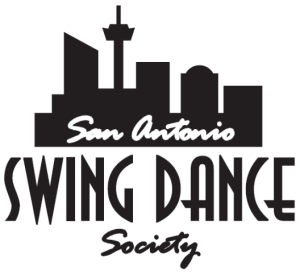Swing History
The Birth of Lindy Hop
Swing dancing originated in Harlem, NY in the late 20s, early 30s. There are many different stories as to how Lindy Hop got it's name, but a few facts are constant. In 1927, after or in the midst of some fast and fabulous dancing, someone approached an amazing dancer, Shorty George Snowden (for whom a vintage jazz step is named), and asked him what dance he was doing. After thinking for a second, Shorty replied, "the Lindy Hop... we flyin' just like Lindy did!" He was referring to Charles Augustus Lindbergh, who had successfully made his 33 hour hop across the Atlantic on May 20th earlier that year.
However the dance was named, hundreds of people from a myriad of backgrounds would gather every night at the Savoy ballroom to dance this Lindy Hop to alternating live bands. The Savoy was a grand dance hall the size of two blocks. It had a massive bandstand at either end from which legendary musicians such as Chick Webb and Ella Fitzgerald would play. When it was filled with dancers, the floor vibrated with the rhythm of feet.
In that time, segregation was incredibly pervasive, but not at the Savoy. Here, it didn't matter if you were black, white, yellow, or blue. You could be a famous movie-star or the pharmacist across the street -- no one cared as long as you could dance.
Lindy Hop Takes the World by Storm
It didn't take long until this energetic dance spread past Harlem. It was so free and inventive -- unlike anything the world had ever seen. With the creation of the first air steps (aerials) in 1935 by a legendary dancer named Frankie (Musclehead) Manning, the world went wild! Soon performance requests were flooding in from wealthy people everywhere who wanted lindy hop featured at their lavish parties. Hubert White, the head bouncer at the Savoy, saw a business opportunity and organized a performance troupe from the very best and most innovative of the Savoy dancers. Whitey's Lindy Hoppers was born. They made appearances all over the world, including a performance for the Queen of England. They were also featured in a number of major motion pictures beginning with the Marx Brother's Day at the Races.
Whitey always tried to be fair with his young dancers. On the set of Everybody Sing, when he found out that the star, Judy Garland, had been given a break, but the Lindy Hoppers had not, he tore up the contract. "Remember," he would tell his dancers, "ain't nobody better than you."
Between their exploits, the dancers always came back to the Savoy Ballroom. No matter how many gigs they got and how many choreographed routines they did, they always held fast to their social roots.
The Decline of the Swing Era
Part of the beauty of Lindy Hop is that it mirrors the music so well. Dancing to the live bands at the Savoy, there would be a relationship between the dancers and the musicians. If a clarinet did a trill on his horn, you could see that trill running through all of the dancers in the hall through an impromptu move or stylization.
Eventually, however, the swing music that was popular during that time slowly changed, and so, too, did the danced that followed it. The dancers became more and more focused on the expression of the individual, and less focused on partnership. Eventually, the dancers broke connection entirely and moved with each other only visually. As generations passed, Lindy Hop was remembered only as "Lindy timing" in a few ballroom moves -- the one, two, triple-step, five, six, triple-stip that the swingout (basic Lindy) was built on.
More Info
To learn more, check out these links:
